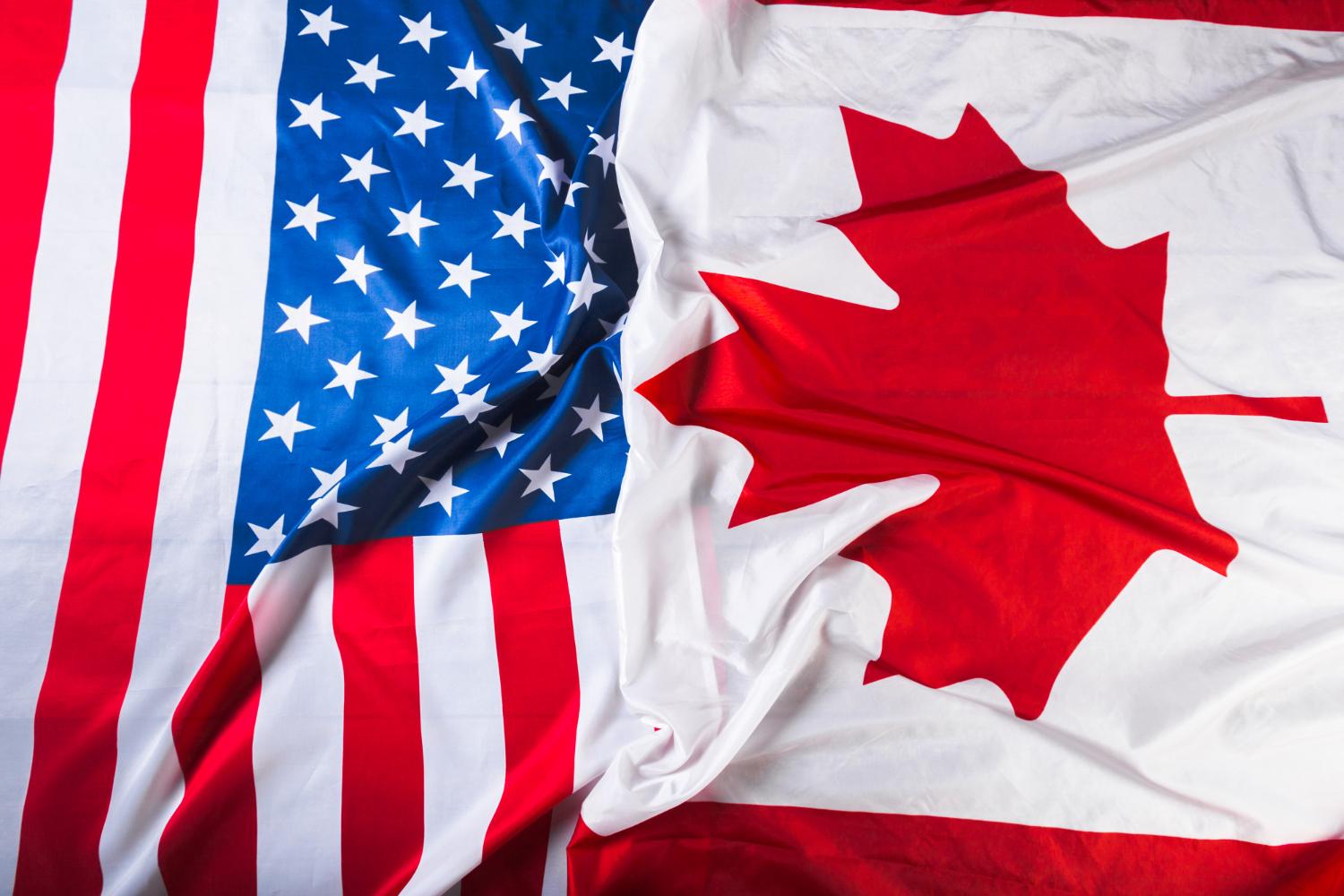Moving to Canada from US has gained popularity, with more than 10,000 American citizens starting their trip northward in 2023 alone. The numbers show a transformation in migration patterns between these neighboring countries. About 18,600 Canadians moved south during this time, yet Americans moving to Canada have increased by a lot in the last decade.
US citizens have several advantages with Canadian immigration. They enjoy visa-exempt status and don’t need a visa or electronic travel authorization to enter Canada. Canada provides many pathways that work well for Americans. Work permits through agreements like CUSMA aid authorization in about 63 high-skill professions. The Working Holiday program gives the ability to live and work in Canada for up to a year if you have an age between 18 and 35. A valid US passport is all you need. Medical services in Canada’s universal healthcare system are more affordable than the United States.
This piece explores the most available visa programs for Americans who plan to move to Canada in 2025. We’ll cover specialized work permits, study options, family sponsorship and citizenship by descent. You’ll find detailed information about eligibility requirements, application processes, and ways to turn temporary status into permanent residency. The right pathway exists whether you’re a skilled professional, student, or someone with Canadian family connections. Let us help you find it.
CUSMA Work Permits: A Fast Track for Skilled Americans
The Canada-United States-Mexico Agreement (CUSMA) gives American professionals a quick way to work in Canada. This immigration category replaced NAFTA in 2020 and makes it easier for US citizens to get jobs in Canada without dealing with complex work permit rules.
Who qualifies under CUSMA
US and Mexican citizens can apply for CUSMA Professional work permits. Permanent residents or other visa holders in the US don’t qualify. You need three things to be eligible: a valid job offer from a Canadian employer, the right credentials (usually a bachelor’s degree or equivalent in your field), and a job that fits one of the 63 approved professions. These jobs cover engineers, scientists, accountants, computer systems analysts, management consultants, healthcare professionals, and teachers.
CUSMA has big advantages for Americans. The best part? You don’t need a Labor Market Impact Assessment (LMIA), which is Canada’s standard labor market test that adds time and costs to getting a work permit. This means American professionals can get their work permits faster, though everyone still needs to follow Canada’s temporary work rules.
How to apply at the border or online
US citizens have several ways to apply for a CUSMA work permit. The fastest option is to apply at a Canadian port of entry (POE)—either at a land border or airport—where you might get your permit right away if you have the right paperwork. You can also apply online or through a Canadian visa office.
Your employer needs to do their part first. They must submit your job offer through the Immigration, Refugees and Citizenship Canada (IRCC) Employer Portal and pay CAD 230 as a compliance fee. They’ll give you an offer of employment number you’ll need for your application.
Bring all your documents: your US passport, educational papers, a detailed job description, and proof that your job qualifies under CUSMA. A work permit costs CAD 215.97. Processing takes about three weeks for applications from outside Canada, but it can take up to 233 days if you apply from inside Canada.
Duration and renewals
Your first CUSMA Professional work permit can last up to three years, based on your job terms. You can extend it in three-year chunks with no limit, as long as you still qualify. For renewal, you’ll need a new job offer letter and proof that you still meet all requirements.
Renewals are simple if your job stays the same. Your employer must submit a new offer through the Employer Portal and pay the compliance fee again. With no major job changes, extensions usually happen quickly.
Using CUSMA as a path to permanent residency
CUSMA work permits are temporary, but they’re a great way to get Canadian work experience that helps with permanent residency applications. After working in Canada for a year, you might qualify for permanent residence through the Canadian Experience Class (CEC) or Federal Skilled Worker Program (FSWP) under Express Entry.
Canadian work experience boosts your Comprehensive Ranking System (CRS) score in Express Entry. You can get up to 80 points for five or more years of Canadian work experience. Your score can go even higher when you combine Canadian work experience with other factors. You might get 50 extra points for your education plus two years of Canadian work experience, and another 50 points if you have both foreign and Canadian experience. A higher CRS score means better chances of getting an Invitation to Apply (ITA) for permanent residence.
 Studying in Canada and Staying After Graduation
Studying in Canada and Staying After Graduation
Americans who want to move to Canada can take advantage of the country’s education system. Canadian education provides a clear path to immigration that combines quality learning with a chance to get work experience and eventually become a permanent resident.
Getting a study permit as a US citizen
US citizens have a big advantage when it comes to getting study permits. They can apply online or get their permit right at the Canadian border when they arrive. This option exists only for US citizens and permanent residents. You’ll need an acceptance letter from a designated learning institution (DLI), proof you can pay for your studies, and a valid US passport. The application costs CAD 209.00. US permanent residents who haven’t given biometrics in the last 10 years must pay an extra CAD 118.44. Your study permit stays valid throughout your program plus 90 days.
Post-Graduation Work Permit (PGWP) explained
The Post-Graduation Work Permit is a chance to build Canadian work experience after graduation. This open work permit lets you work for almost any employer. Your PGWP length matches your study program’s duration. Programs lasting 8 months to 2 years get a matching permit length. Programs over 2 years qualify for a 3-year permit. Starting February 2024, master’s graduates get a 3-year PGWP no matter how long their program was. You must manage to keep full-time student status throughout your program and apply within 180 days after finishing. Starting November 2024, university graduates need language test results showing Canadian Language Benchmark level 7.
How study and work experience lead to PR
Canadian education combined with work experience creates a solid path to permanent residency. After working in a skilled job for at least a year with your PGWP, you might qualify for the Canadian Experience Class through Express Entry. This program rewards candidates who have Canadian education and work experience with extra points in the Complete Ranking System. You can also try various Provincial Nominee Programs that focus on international graduates with local work experience. Many international students become permanent residents through this education-work-PR pathway.
Benefits of Canadian education for Americans
Canadian education gives Americans several key advantages beyond immigration. Tuition fees in Canada cost less than other developed countries, making it a smart financial choice. Students can work part-time up to 24 hours weekly during school terms and full-time during breaks. Canada’s public schools are free for permanent residents’ children up to age 18. The country welcomes hundreds of thousands of international students each year, creating learning communities of all backgrounds where Americans can succeed.
Working Holiday and Youth Mobility Options
The International Experience Canada (IEC) program gives young Americans another great way to move from the US to Canada. Young people can work and travel in Canada for a while and learn about international life without the usual work permit restrictions.
Eligibility for International Experience Canada (IEC)
Many people think US citizens can’t join the IEC program, but they actually can – just through a different path than partner countries’ citizens. The United States doesn’t have a youth mobility agreement with Canada. However, Americans aged 18 to 35 can still access the program through Canadian Recognized Organizations (ROs). You’ll just need a valid US passport with at least one year left and proof of about CAD $3,483 to cover your first expenses when you arrive. Health insurance is mandatory for your entire stay. You must also show you have a return ticket or enough money to buy one before you leave.
How to apply through a Recognized Organization
Americans can’t apply directly to IEC since the US isn’t on the eligible country list. They must work with Canada’s Recognized Organizations instead. ROs are Canada-based youth service groups that the Canadian government authorizes to help young international people join work and travel programs. SWAP Working Holidays and GO International are two ROs that help US citizens specifically. Your first step is to contact an RO. They’ll give you an official confirmation letter for your profile submission. Next, you’ll create an online profile through the Immigration, Refugees and Citizenship Canada (IRCC) portal. Selected candidates have 20 days to submit their work permit application and pay the CAD $250 fee.
What jobs you can do on a working holiday
The Working Holiday category comes with an open work permit. You can work for almost any employer in Canada, which means you’re not stuck with one job or location. Tourism and hospitality are popular industries – restaurants, hotels, and ski resorts often hire temporary workers. Notwithstanding that, qualified candidates can also find jobs in professional fields like science, law, communications, and commerce. Toronto, Vancouver, Banff, and Whistler are popular spots where seasonal tourism creates lots of job openings.
Other youth-focused visa streams
The IEC program offers two more options besides Working Holiday that Americans can access through ROs. Young Professionals suits people who want career growth through Canadian work experience in their field. This option requires a signed job offer and an employer-specific work permit before you apply. The International Co-op (Internship) category helps current students complete work placements they just need for their studies. These focused paths are a great way to get resume experience that might lead to future immigration chances.
 Spousal Sponsorship and Family-Based Immigration
Spousal Sponsorship and Family-Based Immigration
Moving to Canada through family relationships offers Americans another valuable path. Canadian citizens and permanent residents can sponsor their spouse, common-law partner, or conjugal partner to become permanent residents through the Family Class immigration program.
Who can sponsor and who can be sponsored
Canadian citizens or permanent residents must be at least 18 years old to qualify as sponsors. Canadian citizens living outside Canada can still sponsor their spouse but they need to prove they plan to return to Canada after their spouse becomes a permanent resident. People cannot sponsor if they receive social assistance (except for disability), face bankruptcy, or have certain criminal convictions. The person getting sponsored must share a genuine relationship with the sponsor. This relationship could be through legal marriage, common-law partnership (living together for at least 12 consecutive months), or in some cases, conjugal partnership (committed relationship lasting at least 12 months where couples couldn’t live together due to exceptional circumstances).
Inland vs. Outland sponsorship explained
Inland and Outland represent the two main sponsorship paths. Inland sponsorship works best when your spouse or partner lives with you in Canada with valid temporary status. Both partners need to stay in Canada throughout this process. The Outland option suits couples where the spouse lives abroad or needs travel flexibility during processing. Outland applications offer one significant advantage – you can appeal if refused. This option doesn’t exist for Inland applications. Your living situation and travel requirements will help determine which option suits you better.
Timeline and documentation needed
Spousal sponsorship usually takes 12-28 months to process. You’ll need several documents: identification papers, marriage certificates or proof of common-law relationship, financial records, and police clearance certificates from places where you’ve lived for six months or more since turning 18. Various government forms must also be completed.
Open work permits for sponsored spouses
Spouses going through the Inland route can apply for an open work permit while waiting for permanent residence approval. They must meet certain conditions: share a genuine relationship with their sponsor, receive an Acknowledgment of Receipt letter for their permanent residence application, and live in Canada with their sponsor. This permit lets them work for almost any Canadian employer during the permanent residency process.
Claiming Canadian Citizenship by Descent
Many Americans don’t realize they might qualify for Canadian citizenship through their family history. This heritage connection is a chance for people moving from the US to Canada who have Canadian parents or grandparents.
Understanding the first-generation rule
Canadian citizenship by descent follows a “first-generation limit.” Your parent’s Canadian citizenship can pass down to you if you were born outside Canada after April 17, 2009. You might qualify with a Canadian parent, but your children born outside Canada won’t automatically become citizens. The Ontario Superior Court of Justice called this limit unconstitutional in December 2023. The ruling remains suspended until November 20, 2025. Current rules still apply, so Americans with Canadian parents should submit their applications soon instead of waiting for possible law changes.
How to apply for a citizenship certificate
You’ll need to get proof of Canadian citizenship by applying for a citizenship certificate through Immigration, Refugees and Citizenship Canada. Submit your application online or on paper based on your situation. Americans with Canadian parents must provide documents that prove their relationship to their Canadian parent, along with their parent’s citizenship proof and birth certificate. The process usually takes 5 to 8 months. Right now, the application costs about CAD $200.
Benefits of dual citizenship for Americans
US-Canadian dual citizenship comes with many advantages. Dual citizens can live, work, and study freely in both countries without needing visas. Border crossing becomes hassle-free. You’ll have access to healthcare and education systems in both nations and can vote in either country’s elections. This status gives Americans moving to Canada complete flexibility and removes the need for visa renewals or permanent residency applications.
Finding Your Way
These days, Americans have more ways than ever to move to Canada. Each immigration pathway comes with its own perks, and your best choice depends on your background, family ties, and future plans. Professional workers get a big advantage through the CUSMA process. They don’t need to deal with the complex LMIA requirements that other foreigners face. Students can earn valuable credentials and work after graduation, which improves their chances of becoming permanent residents.
Young Americans can get a taste of Canadian life through Working Holiday programs with Recognized Organizations. This path lets them work legally and learn about different parts of Canada and career options. People with Canadian spouses or partners have special family sponsorship routes that help keep families together. Some Americans might find out they have Canadian parents or grandparents. This could let them skip the immigration process by claiming citizenship by descent. It’s smart to check this option soon because of new rules about first-generation claims.
Canadian immigration needs careful planning even with all these options. Every pathway has its own set of rules about documents, applications, and processing times. The right program should match your situation – that’s vital for a smooth move. The goal isn’t just to get temporary status but to build a solid foundation for your new Canadian life.
The move north involves more than just paperwork. Americans need to think about universal healthcare, different tax systems, housing costs, and cultural differences. In spite of that, Americans usually adapt well because both countries share similar cultures. The move makes sense for many reasons – better job prospects, education, family ties, or just a fresh start. These pathways give Americans real chances to make Canada their home in 2025 and beyond.
Key Takeaways
Americans have multiple accessible pathways to move to Canada in 2025, each offering unique advantages based on individual circumstances and goals.
• CUSMA work permits bypass standard requirements – US professionals in 63+ designated fields can skip the lengthy LMIA process and apply directly at border crossings for immediate work authorization.
• Study-to-work pathway creates permanent residency opportunities – Canadian education leads to post-graduation work permits, which provide valuable experience for Express Entry applications.
• Working Holiday programs welcome Americans aged 18-35 – Through Recognized Organizations, young Americans can work anywhere in Canada for up to one year with minimal requirements.
• Family sponsorship offers direct permanent residency – Canadian citizens and permanent residents can sponsor American spouses, with inland applicants eligible for open work permits during processing.
• Canadian citizenship by descent may already apply – Americans with Canadian parents might qualify for immediate citizenship, though current first-generation rules face legal challenges until 2025.
The key to success lies in choosing the pathway that aligns with your qualifications, timeline, and long-term immigration goals. Each option provides stepping stones toward permanent residency, making Canada increasingly accessible for Americans seeking new opportunities north of the border.








